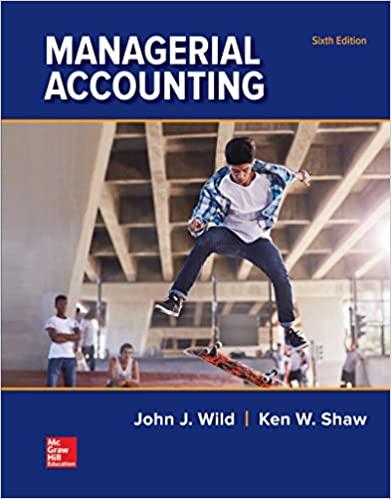Example format provided below:
4. I want a professionally presented and well-organized document. The Edmonton Fabricating Company (EFC) manufactures snow blowers, EFC is investigating the feasibility of a new line of cordless snow blower. The new manufacturing equipment to produce the new line of snow blower will cost $750,000. The installation costs are expected to be $25,000, the setup costs are expected to be $30,000 and the training costs are expected to be $15,000. The company has just finished a marketing feasibility and this study strongly endorses going ahead with a further financial study to evaluate the overall feasibility of the project. The cost of the marketing study was $35,000. The projected useful life of the new equipment is 8 years and the project unit sales are expected to be YEAR UNIT SALES 3,000 3.300 3.500 3.700 4,000 4.250 4.300 4.300 ON ON The new cordless snow blower would be priced to sell at $250 per unit and the variable operating costs are expected to be 50% of sales. After the first year, the sales price is estimated to increase by 3% every year. The total fixed operating costs are expected to be $200,000 per year and would remain constant over the life of the project. The project would require $45,000 in working capital at the start time period zero). The entire amount of working capital will be recovered at the end of the project. The estimated salvage value of the equipment after 8 years is $55,000. The marginal tax rate is 35%. The CCA rate of the equipment is 30%. The company uses the DCF model to determine the cost of retained earnings and new common stock. You have been provided with the following data: Do - $1.00; Po - $25.00; 8 - 7.00% (constant) and F-10.00% The company's 8.00% coupon rate, semi-annual payment, $1,000 par value bond that matures in 20 years sells at a price of $1,100. The new bonds would be privately placed with no flotation costs. The target capital structure is 50% debt, 30% common equity (retained earnings) and 20% equity (new common stock) TABLE 11-4 Analysis of a New (Expansion) Project: Part 3 (Dollars in Thousands) (continued) D E F G H Years A B C 46 47 Part 3. Projected Net Cash Flows 48 49 50 Investment Outlays: Long-Term Assets 51 Building 52 Equipment 2012 2016 2018 2019 2020 (512.000) (8,000) 20,000 $3.06 $61,200 42,840 8.000 470 2,040 20,000 $3.12 562.424 43,097 8,161 452 54 Operating Cash Flows over the Project's Life 55 Units sold 56 Sales price 57 Sales revenue 58 Variable costs 59 Fixed operating costs 60 CCA (building) 61 CCA (equipment) 62 Oper. Income before taxes (EBIT) Taxes on operating income (30%) 64 Net operating profit after taxes (NOPAT) 65 Add back CCA Operating cash flow 67 68 Cash Flows Due to Net Operating Working Capital 69 Net operating working capital (based on sales) 70 Cash flow due to investment in NOWC 20,000 $3.00 $60,000 42,000 8.000 240 1,200 8.560 2,568 5.992 1.440 $7.432 20,000 $3.18 $63,672 44,571 8 242 434 1,000 9,426 2,828 6.598 1.433 $8,031 7.770 2.331 1428 8.687 2.606 6.081 5.439 2.510 $7949 1.880 57,960 $6.242 36.367 $6,000 $6.000) 56,120 ($120) 36,367 72 73 74 75 76 77 Salvage Cash Flows: Long-Term Assets Salvage value cash flow Building Salvage value cash flow: Equipment Total salvage value cash flows $10,000 2,000 $12.000 $26,399 Net cash flow (Time line of cash flows) (526.000) 57,312 57,827 $7,836








